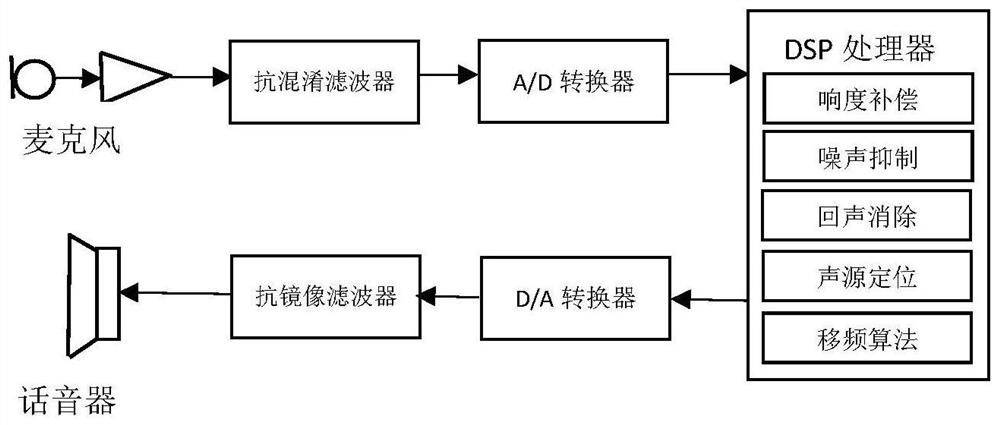A binaural sound source localization method based on deep learning in digital hearing aids
A deep learning and sound source localization technology, applied in hearing aids, localization, and devices for obtaining desired pointing characteristics, etc., can solve the problems of inability to meet the real-time performance of hearing aids and high technical complexity of sound source localization
- Summary
- Abstract
- Description
- Claims
- Application Information
AI Technical Summary
Problems solved by technology
Method used
Image
Examples
Embodiment Construction
[0020] Step 1. Using the human auditory perception theory, combining the auditory characteristics of the human ear and the working mechanism of the cochlea, pass the binaural speech signal into the gammatone filter and divide it into N channels, and extract the sensitive information of the human ear;
[0021] Due to the frequency division characteristics and auditory masking characteristics of the cochlea, the gammatone filter bank is used to decompose the speech signal into multiple channels. The gammatone filter is a cochlear basement membrane model based on the auditory model, which can better simulate the sharpness of the basement membrane. The filter characteristics of the filter are in line with the auditory perception characteristics of the human ear, and the realization of the filter is simple. Therefore, the gammatone filter bank is selected to decompose the signal of the noisy speech, so that it can simulate the auditory characteristics of the human ear. The time-doma...
PUM
 Login to View More
Login to View More Abstract
Description
Claims
Application Information
 Login to View More
Login to View More - R&D
- Intellectual Property
- Life Sciences
- Materials
- Tech Scout
- Unparalleled Data Quality
- Higher Quality Content
- 60% Fewer Hallucinations
Browse by: Latest US Patents, China's latest patents, Technical Efficacy Thesaurus, Application Domain, Technology Topic, Popular Technical Reports.
© 2025 PatSnap. All rights reserved.Legal|Privacy policy|Modern Slavery Act Transparency Statement|Sitemap|About US| Contact US: help@patsnap.com



